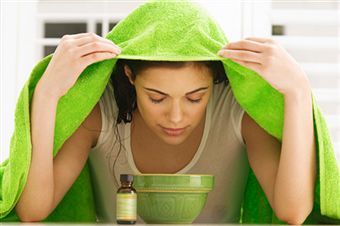Traditional Asian MedicineTraditional Asian Medicine looks at disease as originating from within the body, creating disharmony on the inside. Techniques include acupuncture, moxabustion, cupping, electroacupuncture and Chinese Herbs. Over 2000 years old, Traditional Asian Medicine has its' own unique medical model in terms of diagnosis and viewing the body. Based on the concept of ‘qi’ or ‘vital energy’ circulating in pathways throughout the body, any blockages in these pathways disrupt the flow of qi leading to imbalance and undesirable symptoms. By using acupuncture and other modalities, we can correct imbalance to restore a state of health.
|
Nutrition
Food intolerances, deficiencies, dietary imbalances and nutritional excesses have been associated with many medical conditions. Through the use of appropriate dietary modification and possible supplementation if warranted, health concerns can be addressed and treated with minimal side effects and long lasting change.
Botanical Medicine
|
Botanical Medicine uses various forms of herbs and plants as medicine. Botanicals can be quite powerful and practitioners are trained in their safety, interactions and side effects. Even herbs and spices used in cooking yield valuable nutrition and medicinal compounds. The flower, roots, leaves, bark, or oils of a plant may be used to treat infections, to support the immune system, to balance hormones and regulate physiology. Therapy may take the form of teas, tinctures, ointments, essential oils, supplements and foods.
Note: Even herbs can have potential side effects or interactions with conventional medications or may not be safe to take during pregnancy, Additionally, essential oils can be misused and dangerous if taken improperly. I am qualified to recognize these contraindications and herbs should be prescribed under professional supervision. |
Physical Medicine
|
This includes the following:
Bowen Therapy: Specific series of muscle and connective tissue movements designed to treat a wide range of problems and injuries. These gentle and powerful moves send neurological impulses to the brain which then processes and feeds impulses back to help realign the body. Naturopathic manipulations: cervical, thoracic and lumbar adjustments. I typically refer out for this therapy. Hydrotherapy: We often forget about the healing power of such a basic element but the use of water is great for pain relief and boosting immunity by stimulating blood circulation. Some examples include constitutional hydrotherapy, steam inhalation (pictured to the right), immersions, compresses and poultices. |
Lifestyle Counselling
There is one key word we're all familiar with. Stress. Whether it is in a physical form (exercise, sports, trauma, environmental), or mental (work, school, money, family, friends, etc), the body is constantly under some major stressors. In the 21st century we are made to feel as though we need to be available 24/7, attached to our phones and devices all the time, connected wherever we are. Learning to give yourself "me time", being mindful of eating habits, sleeping habits and checking in with yourself every so often is becoming ever so important.
Labs & Diagnostic Testing
1. Lifelabs (or other labs like Gamma Dynacare): Similar process to blood work done by your G.P., but a requisition from an N.D. is not covered by OHIP. This means paying upfront for testing, such as for CBC, ferritin, cholesterol, thyroid panel, liver enzymes, Vitamin D and B12 status, and more. Turnaround time is fairly quick (especially if you sign up online to get your results when they come in!).
2. Comprehensive Testing: Covers things such as food sensitivities, hair analysis, stool analysis, lyme disease, SIBO, Organic Acid Testing, Adrenal Panels, Hormones (saliva or urine), parasites, and much more. These tests are also out of pocket to the patient, but you may want to check your benefits to see if your insurance company covers any testing. Depending on the type of test (urine, saliva, blood, etc), you may get a test kit to take home with you that you complete and ship back to the lab (shipping is included in cost of test). Testing prices are inclusive of all taxes as well.
2. Comprehensive Testing: Covers things such as food sensitivities, hair analysis, stool analysis, lyme disease, SIBO, Organic Acid Testing, Adrenal Panels, Hormones (saliva or urine), parasites, and much more. These tests are also out of pocket to the patient, but you may want to check your benefits to see if your insurance company covers any testing. Depending on the type of test (urine, saliva, blood, etc), you may get a test kit to take home with you that you complete and ship back to the lab (shipping is included in cost of test). Testing prices are inclusive of all taxes as well.
Photo used under Creative Commons from Pascal Volk



